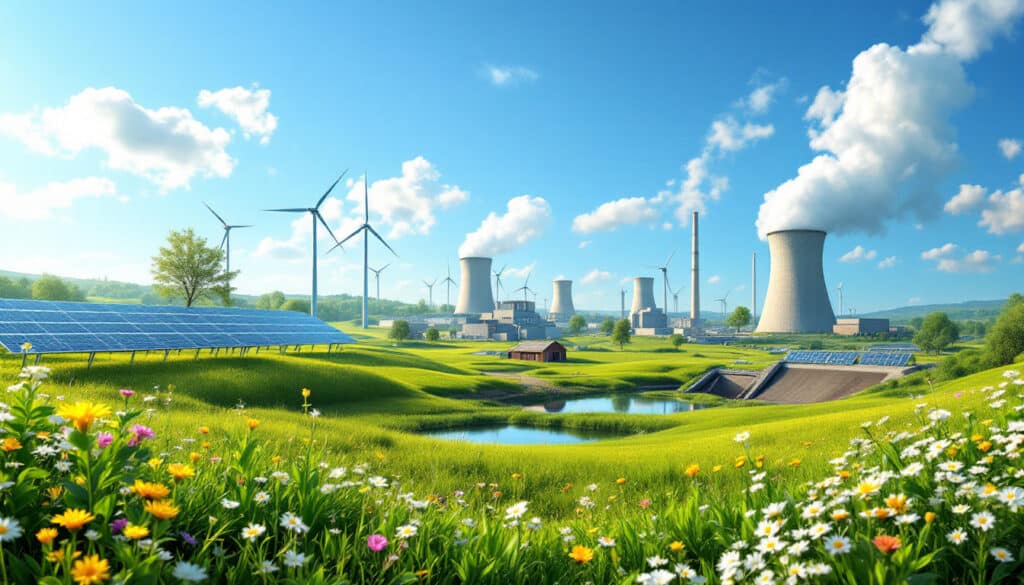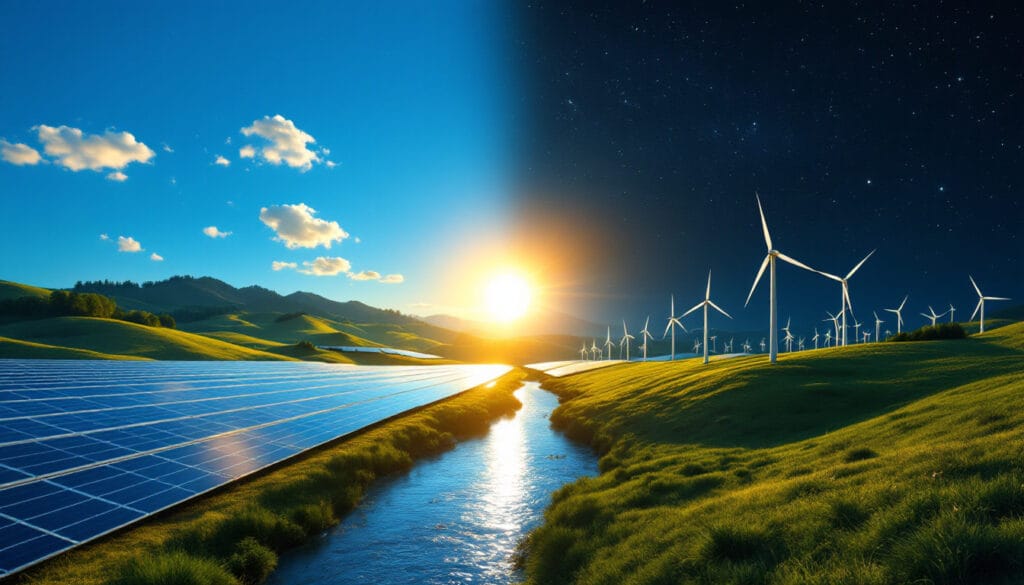The primary energies represent the very essence of raw energy as it is available in our environment upstream of any transformation. Whether it is wind energy, solar radiation, geothermal energy, or crude oil, these sources constitute the basis of our energy supply. The transition from a primary energy to usable energy on a daily basis involves crucial transformations that allow for the creation of energy carriers such as electricity or fuel, necessary to power our industries, transport, and homes. Understanding these energies means grasping the foundations of our energy resources for a cleaner and more sustainable future.
Primary Energies: Understanding Their Roles and Definitions
The primary energies play a crucial role in our daily lives and are at the heart of energy transitions. By definition, primary energy refers to any form of energy available in nature before any transformation. It is the basis for all other forms of energy and can be used in its raw form or transformed to meet our daily and industrial energy needs.
The sources of primary energies are varied and include, among others, crude oil, natural gas, solid mineral fuels, biomass, and renewable sources such as solar energy, wind energy, hydropower, and geothermal energy. These sources can be directly exploited or require conversion into secondary energy, such as electricity or fuel, to be easily usable and transportable. What is secondary energy?
For example, one kilogram of uranium, one liter of crude oil, or solar radiation are all primary energies. These resources can be transformed to produce secondary energy, which will then be delivered to consumers in the form of final energy. The conversion process often results in energy losses at each step, highlighting the importance of efficiently exploiting each primary energy source for energy sustainability. To learn more, check out this article on understanding primary energy.
In France, uranium is one of the most exploited primary energies and accounts for a major share of electricity production via nuclear power plants. Fossil fuels, while being indispensable primary energies, pose a major ecological challenge due to their environmental impact, particularly in terms of carbon emissions. Additionally, renewable energies are increasingly taking a significant place in the energy landscape, supporting the transition to more sustainable systems. This includes the expansion of energy self-consumption initiatives.
The concepts of primary, secondary, final, and useful energy are essential for comparing and evaluating the efficiency of different energy sources. These concepts help better understand the environmental and economic impact of each energy source and reflect the need to reduce our grey energy and strategically plan our energy balance. To delve deeper into these notions, you can explore this article on understanding the energy balance.
Beyond their simple use, primary energies are at the heart of the transition to a more ecological and sustainable energy model. Technological innovations improve transformation processes and optimize the energy yields of each resource. In this context, eco-site emerges as an exemplary model, combining various green technologies to create a sustainable and environmentally friendly energy ecosystem.

FAQ about Primary Energies
Q : What is a primary energy?
A : A primary energy is a source of energy available in nature before any transformation. It is raw and can be directly usable in its natural form or after transformation into secondary energy.
Q : What are examples of primary energies?
A : Examples of primary energies include crude oil, natural gas, oil shales, biomass, hydropower, wind energy, geothermal energy, and solar radiation.
Q : What is the difference between primary energy and secondary energy?
A : Primary energy is extracted directly from nature and is not transformed, while secondary energy results from the transformation, storage, and delivery process of primary energy.
Q : Why are renewable energies considered primary energies?
A : Renewable energies, such as wind, solar, and hydropower, are naturally present in the environment and can be exploited without transformation, making them essential primary energies for the energy transition.
Q : Is uranium considered a primary energy in France?
A : In France, uranium is one of the most consumed primary energies, as it is a natural resource used to produce nuclear energy.
Articles similaires
Thank you!
We will contact you soon.













